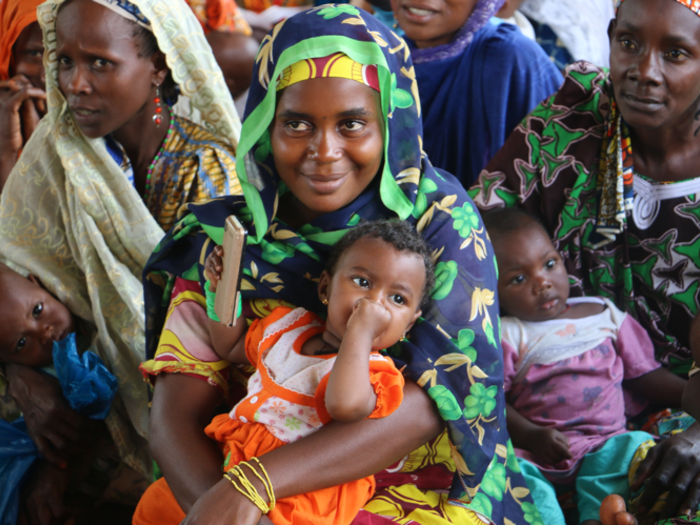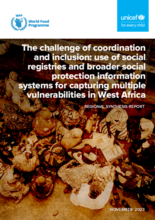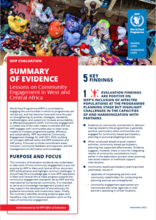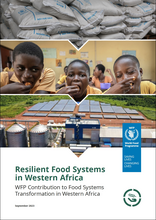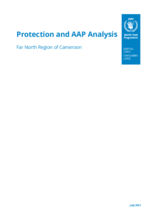Cameroon
- 4.4 million
- people in need of humanitarian assistance
- 29%
- children under 5 are stunted
- 26.5 million
- population
A lower-middle-income country with over 26 million people, Cameroon ranks 153 out of 189 countries in the 2020 Human Development Index. While the country experienced consistent economic growth averaging 4.3 percent per year for a decade up to 2019, poverty levels have remained steady.
Over 55 percent of Cameroonians live in poverty which affects several aspects of their lives – from health to education, living conditions and work among others. 37.7 percent of people are severely impoverished. The incidence of poverty is particularly high in rural parts of the northernmost and eastern regions, where structural underdevelopment and recurring climatic shocks, including floods and prolonged dry spells, limit people’s ability to thrive.
What the World Food Programme is doing in Cameroon
-
Emergency response
-
WFP provides unconditional life-saving food assistance to populations affected by shocks such as violent conflict and the effects of climate change and pandemics, including refugees, internally displaced persons (IDPs), returnees and vulnerable host communities in Adamawa, East, Far North, North, North West and South West regions. WFP’s support ensures safe access to adequate and nutritious food during and after crises, while supporting recovery from and building resilience to shocks.
-
Early recovery and resilience
-
WFP promotes the creation of productive assets and supports the development of income-generating activities using community-led gender-responsive approaches. WFP works to ensure that vulnerable families in protracted displacement and at-risk communities in chronically food-insecure areas have safe year-round access to adequate and nutritious food and increase their resilience to shocks.
-
Addressing malnutrition
-
WFP provides nutrition assistance to children aged 6 months to 5 years, pregnant and breastfeeding women and girls, and malnourished people living with HIV. WFP’s goal is to reduce all forms of malnutrition among the target vulnerable populations in prioritized food insecure regions in line with national priorities. WFP’s nutrition improvement activities include malnutrition prevention and treatment, social and behaviour change communication to encourage the adoption of recommended nutritional practices as well as capacity strengthening. These are, implemented in coordination with government, other UN agencies and nutrition partners.
-
Support to smallholder farmers
-
WFP provides financial and technical support to food insecure smallholder farmers in the Far North, North, Adamawa and East regions of Cameroon to enhance their productivity and livelihoods. WFP’s focus is on promoting local agricultural value chains among smallholder farmers through building and managing community infrastructure and post-harvest storage facilities, improving agricultural practices, diversifying crop production, and enhancing market access for both men and women.
-
Capacity strengthening
-
WFP supports the Government in developing shock-response, gender- and nutrition-sensitive social safety nets and creating national systems for cash transfers as well as for home-grown school meals. Support to the Government includes South-South cooperation initiatives facilitated by WFP’s Centres of Excellence in Brazil and China.
-
UN Humanitarian Air Service (UNHAS)
-
WFP operates safe, reliable, and cost-effective air services to enable the humanitarian community to reach people in need in hard-to-reach crisis-affected areas. By operating passenger and cargo aircraft, including security and medical evaluations, WFP provides alternative transport where commercial air operators are unavailable due to significant distances and insecurity limiting access to parts of the country. WFP is committed to strengthening air transport service delivery by reopening and launching additional destinations throughout the pandemic and post-pandemic period.
Cameroon news releases
Go to pagePartners and donors
Find out more about the state of food security in Cameroon
Visit the food security analysis pageOperations in Cameroon
Contacts
Office
P.O. Box 7308, Rue Giscard, Estaing, Face Cercle Municipal
Yaoundé
Cameroon

